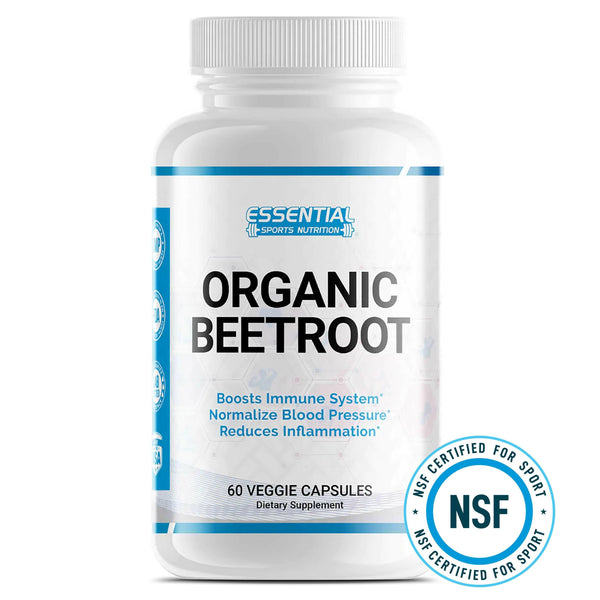The Paleo Diet for Weight Loss: How It Works, Tips, and Meal Ideas
Embarking on a journey to lose weight can often feel like navigating through a maze of confusing diets and conflicting advice. Many people search for a sustainable way to not only shed pounds but also improve their overall health.
The Paleo diet, grounded in the principle of emulating the eating habits of our hunter-gatherer ancestors, is great for dieting beginners and has gained attention for its potential benefits in weight loss and wellness improvement.

An important fact to note is that the Paleo diet emphasizes consuming lean meats, fish, fruits, and vegetables while eliminating processed foods and sugar. It reduces intake of phytoestrogens from plants like flax and soy to avoid hormonal imbalances. This approach is designed to provide optimal nutrition by focusing on whole, unprocessed foods an may help reduce inflammation in the gut.
Research supports its effectiveness in promoting weight loss and enhancing heart health.
This article provides an ultimate guide to leveraging the Paleo diet for weight loss, including tips, meal plans, and success stories that illustrate its impact. By following our structured plan filled with nutritious recipes and practical advice, readers will discover how to effectively apply this ancient dietary wisdom in modern life.
Get ready for transformation.
Key Takeaways
- The Paleo diet focuses on eating lean meats, fruits, vegetables, nuts, and seeds while avoiding processed foods and sugar. This helps with weight loss and improving heart health.
- Incorporating whole foods into meals reduces calorie intake and supports metabolism for sustained weight loss. Activities like lifting weights and aerobic exercises complement the diet by increasing muscle mass.
- Preparing meals at home allows control over ingredients to ensure they are in line with Paleo guidelines. It also avoids unhealthy options often found in restaurant meals.
- Joining online forums or local groups can provide support and encouragement from others following the Paleo lifestyle.
- Success stories show that sticking to the Paleo diet can lead to significant weight loss without counting calories or measuring portions.
Understanding the Paleo Diet
The Paleo Diet takes inspiration from the eating habits of our hunter-gatherer ancestors. This approach to eating emphasizes lean meats, fish, fruits, vegetables, nuts, and seeds. It strictly cuts out processed foods along with dairy products, grains, and legumes.
The idea is to consume foods that are as close as possible to their natural state.
This diet not only focuses on weight loss but also aims at improving overall health by reducing the risk of chronic diseases such as heart disease, type 2 diabetes, celiac disease (gluten-intolerance), and other autoimmune diseases. Since it encourages eating a variety of unprocessed foods rich in essential nutrients, adherents often experience an increase in energy levels and insulin sensitivity.
The restriction of carbs and added sugars plays a key role in managing blood sugar levels and can prevent insulin resistance.
How the Paleo Lifestyle Contributes to Weight Loss

The Paleo lifestyle promotes weight loss by focusing on whole, unprocessed foods that our ancestors ate. This approach naturally reduces calorie intake and improves metabolism, leading to sustained weight loss.
Elimination of Processed Foods
Cutting out processed foods is a key part of the Paleo diet. This means avoiding foods with added salt, sugar, and unhealthy additives. Instead, people eat meals made from fruits, vegetables, and lean proteins.
These whole foods are rich in nutrients and help reduce hunger without extra calories.
Switching to unprocessed foods can lower intake of highly processed items that often contribute to weight gain and health issues like high blood pressure and cardiovascular disease.
Meals focus on quality ingredients such as grass-fed beef instead of candy or fast food. This shift supports healthy eating by emphasizing foods that our ancestors would have hunted or gathered.
Incorporation of Lean Proteins and Healthy Fats
Eating lean meats, fish, eggs, nuts, avocado, and using olive oil adds essential proteins and healthy fats to your diet. These foods are central to the Paleo lifestyle. They help build muscle and provide energy without adding unhealthy fats or excess calories.
Lean protein sources like chicken and fish support weight management by making you feel full longer.
Including healthy fats from avocados and olive oil boosts heart health and aids in absorbing vitamins. These fats are crucial for reducing belly fat and improving metabolic health.
Unlike saturated fats found in highly processed foods, the monounsaturated and polyunsaturated fats in these Paleo staples support overall well-being.
Lowering Carb Intake
Lowering carb intake is a key aspect of the Paleo diet. This lifestyle aims for 30% of total calories to come from carbohydrates, focusing on those from fruits and vegetables rather than grains or processed foods.
By reducing carbs, the body starts using fat as its primary fuel source. This shift can help manage blood sugar levels and support weight loss.
The Paleo diet excludes high-carb foods like bread, beans, and peanuts. Instead, it encourages eating low-carb vegetables and fruits. These natural sources provide essential nutrients without spiking insulin levels.
Maintaining steady insulin helps avoid sudden hunger spikes and promotes fat burning over fat storage.
Staying Hydrated and Active
Drinking plenty of water is a key component of the Paleo lifestyle. It helps with weight loss by keeping you full and reducing the urge to eat when not actually hungry. Water boosts your metabolism, aiding in the faster burning of calories.
Engaging in both aerobic activity and resistance training is also essential. These exercises complement the diet by increasing muscle mass, which burns more calories even at rest.
Exercise choices should include anaerobic activities such as lifting weights and aerobic exercises like walking or swimming. This balanced approach supports a healthy weight loss while following a Paleo diet.
Regular physical activity improves heart health and increases stamina, making it easier to stick with dietary changes for longer periods.
Sample Paleo Recipes for Weight Loss
Explore delicious recipes that align with the paleo diet and support weight loss goals. Dive into creative dishes that are both nutritious and satisfying, perfect for any meal of the day.
Mongolian Beef & Veggie Kebabs
Mongolian Beef & Veggie Kebabs offer a tasty twist on the traditional takeout dish, combining tender beef with crispy vegetables. The beef gets marinated to enhance its flavors and then grilled until perfectly charred.
Julienned carrots, sliced mushrooms, and bell peppers are added, infusing the meal with antioxidants and important nutrients.
These kebabs are not only delicious but also align with paleo dietary guidelines by focusing on lean proteins and healthy fats. They contribute to weight loss efforts by providing satisfying meals without processed foods or high carbohydrate content.
Preparing this dish encourages a hands-on approach to cooking that fits well within a paleo lifestyle, making it both a nutritious and engaging option for those looking to shed body fat while enjoying their meals.
BBQ Pulled Chicken Stuffed Sweet Potatoes
BBQ Pulled Chicken Stuffed Sweet Potatoes offer a delicious and nutritious twist to your dinner routine. This recipe aligns perfectly with both Whole30 and Paleo diets, ensuring it's free of processed foods while being rich in nutrients.
Tender barbecue chicken is stuffed into baked sweet potatoes, making for a meal that not only satisfies the appetite but also supports weight loss goals. The addition of optional toppings can enhance flavors and nutritional value.
Preparing this dish takes less than 30 minutes, marking it as an ideal choice for quick yet healthy weeknight dinners. It stands out as part of a compilation of 75 easy Paleo slow cooker recipes designed to fit seamlessly into a family meal plan.
This makes BBQ Pulled Chicken Stuffed Sweet Potatoes not just compliant with health-conscious diets but also versatile enough to serve up a comforting meal any day of the week.

Fiesta Breakfast Bowl
The Fiesta Breakfast Bowl is a popular choice among those following a paleo diet for weight loss. It packs in high-quality proteins and is incredibly satisfying, making it an excellent start to the day.
Loaded with fresh vegetables, lean meats, and eggs, this bowl combines flavor with nutrition. It steers clear of processed foods and keeps carb intake low, aligning perfectly with the principles of a paleo lifestyle.
Making a Fiesta Breakfast Bowl involves simple ingredients like avocados for healthy fats, grilled chicken or ground beef for protein, and colorful veggies such as bell peppers and onions.
This dish not only supports weight loss goals but also adds delicious variety to your meal plan. Its rich protein content helps in muscle repair and growth while keeping you full longer, aiding in effective weight management.
Fresh Lemongrass Basil Roasted Salmon
Fresh Lemongrass Basil Roasted Salmon is a delightful recipe that fits both Paleo and Whole30 diets, making it a superb choice for those looking to lose weight. This dish combines wild salmon fillets with aromatic lemongrass paste, vibrant red bell pepper, fresh cilantro, basil, tangy lime juice, and olive oil.
It not only promises a burst of flavors but also provides essential nutrients beneficial for weight loss.
Preparing this dish involves roasting the salmon perfectly while creating a sauce from coconut milk and basil to enhance its flavor. Coconut milk adds a creamy texture without compromising the adherence to low-carb diet principles.
This light yet fulfilling meal brings together omega-3 fatty acids from the salmon and antioxidants from the herbs. Such composition aids in reducing body fat % while ensuring one enjoys delicious meals on their journey towards better health.
Tips for Maintaining a Paleo Lifestyle

Exploring strategies for sustaining a Paleo lifestyle can empower individuals to optimize their health and achieve weight loss goals.
Designing and Adhering to a Meal Plan
Creating a meal plan is crucial for anyone following the Paleo diet to ensure they eat nutrient-dense, whole fresh foods and avoid processed items with added salt, sugar, and additives.
Start by choosing lean proteins, fruits, and vegetables that align with Paleo guidelines. Include healthy fats like nuts and seeds which are essential for a balanced diet. Planning meals ahead helps control portions and prevents reaching out for unhealthy options when hungry.
Sticking to the meal plan requires preparation. Cook meals in advance to save time during busy days. Keep snacks easy and simple - think sliced veggies or a small handful of almonds.
Always have these ready-to-eat healthy options at hand. This strategy supports weight loss by making sure you're not tempted by non-Paleo foods that could derail your progress.
Preparing Healthy Snacks
Preparing healthy snacks is crucial for maintaining a Paleo lifestyle. Focus on lean meats, fresh fruits, leafy vegetables, nuts, and healthy oils. These ingredients align with the modern Paleo diet's emphasis on unprocessed foods.
Make simple yet nutritious snacks like apple slices with almond butter or celery sticks filled with chicken salad. These options are not only tasty but also help keep hunger at bay between meals.
Incorporate organic fruits and vegetables into your snacks whenever possible. Add variety by including seeds and using different types of healthy oils to prepare them. A handful of mixed nuts or a small bowl of berries can provide essential nutrients without added sugars or unhealthy fats.
Such snacks support weight loss efforts by offering satisfying portions that fuel the body efficiently.

Avoiding Restaurant Meals
Eating out can make sticking to a paleo diet challenging. Restaurants often serve meals that include processed foods, unhealthy fats, and added sugars, which the paleo lifestyle avoids.
Choosing to cook at home allows for complete control over ingredients. This ensures meals are made with lean proteins, healthy fats, and fresh vegetables. Cooking at home also helps in maintaining a low carb intake and avoiding nutrient deficiencies.
Staying true to the paleo plan requires planning and commitment, especially when it comes to dining choices. Many restaurants lack options that fully comply with paleo guidelines. Bringing homemade snacks or researching paleo-friendly restaurants ahead of time can help avoid pitfalls.
It supports weight loss by keeping blood glucose levels stable and preventing insulin spikes caused by high-sugar or processed meals.
Providing and Seeking Support
Everyone needs support while adopting a new lifestyle, especially one as distinct as the paleo diet. Joining online forums and local groups can offer encouragement, share recipes, and provide tips for overcoming challenges.
They help demystify complex aspects of paleolithic nutrition, making it easier to stick to this healthful way of eating.
Seeking a mentor or partnering with a friend who is also exploring the paleo lifestyle can significantly increase your chances of success. This partnership allows for sharing meal plans, celebrating milestones together, and keeping each other accountable.
Many find that having someone to navigate the journey with makes sticking to the diet more enjoyable and sustainable over time.
Practicing Patience and Persistence
Sticking to the Paleo diet can test your patience and persistence. This lifestyle shift demands giving up processed foods, refined sugars, and grains which form a large part of modern diets.
It requires making conscious choices about eating whole foods such as lean proteins, healthy fats, and vegetables. The transition may be challenging at first as your body adjusts to new fuel sources for energy instead of relying on quick carbs.
Success in losing weight and improving health with the Paleo lifestyle comes from steady, persistent efforts over time. People often face temptations or obstacles that make it easy to stray from their goals.
However, maintaining focus and being persistent can lead to significant improvements in waist circumference, fat mass reduction, and better control over conditions like diabetes or metabolic syndrome.
Building habits gradually ensures these changes stick for long-term benefits rather than seeking quick fixes that don’t last.
Success Stories: Weight Loss with the Paleo Diet

One woman's journey with the Paleo diet led to a significant transformation, shedding 40 lbs in just three months. Success stories like this are not unique. Many others have found similar weight loss achievements without counting calories or measuring portions.
This approach focuses on eating like our ancestors by choosing whole, unprocessed foods which naturally promote a healthy weight.
The impact of these success stories extends beyond individual achievements, inspiring a community within the Paleo lifestyle. Seven incredible transformations highlight how adopting this stone-age diet can lead to substantial health benefits.
Beyond weight loss, individuals report increased energy levels and improved metabolic health, making the Paleo diet an effective strategy for those looking to change their lives for the better.
The Paleo Diet for Athletes
The Paleo diet, which focuses on consuming foods that were available to our hunter-gatherer ancestors, such as lean meats, fish, fruits, vegetables, nuts, and seeds, can work for athletes depending on individual preferences, nutritional needs, and performance goals. However, there are some considerations to keep in mind:
-
Carbohydrate Needs: Many athletes rely on carbohydrates as a primary source of energy, especially for high-intensity exercise. While the Paleo diet eliminates processed carbohydrates like grains and refined sugars, it also restricts certain whole carbohydrates like grains, legumes, and starchy vegetables. Athletes may need to carefully choose carbohydrate-rich Paleo-friendly foods such as fruits, root vegetables, and tubers to meet their energy demands.
-
Protein Requirements: The Paleo diet typically emphasizes protein-rich foods such as meat, fish, and eggs, which can be beneficial for muscle repair and recovery in athletes. However, it's essential to ensure an adequate intake of protein to support muscle growth and repair, especially for athletes engaged in strength training or endurance activities.
-
Hydration: Since the Paleo diet encourages the consumption of whole foods and discourages processed foods, athletes may need to pay extra attention to their hydration status, particularly if they are consuming fewer sources of sodium and electrolytes commonly found in processed foods.
-
Micronutrient Intake: While the Paleo diet includes many nutrient-dense foods like fruits and vegetables, athletes may need to ensure they are getting enough micronutrients such as iron, calcium, and vitamin D, which are important for energy metabolism, bone health, and overall performance.
-
Individual Variation: As with any diet, individual variation plays a significant role in how well the Paleo diet works for athletes. Some athletes may thrive on a Paleo-style approach, while others may find that they need to modify it to better suit their performance and recovery needs.
Ultimately, whether the Paleo diet works for athletes depends on how well it aligns with their nutritional needs, preferences, and performance goals. Some athletes may find success with a modified Paleo approach that includes a balance of protein, carbohydrates, and fats from whole food sources, while others may prefer a different dietary approach. It's essential for athletes to listen to their bodies, monitor their performance and recovery, and make adjustments as needed to support their athletic endeavors.
Conclusion

The Paleo diet reimagines ancient eating habits to fuel modern weight loss success. By cutting out processed foods and focusing on proteins, healthy fats, and hydration, this lifestyle simplifies healthier choices.
Can you picture meals that are both nutritious and delicious? Remember, transforming your health doesn't have to be complex or restrictive. Let's embrace the power of simplicity for a happier, healthier life.
Eating Paleo for Successful Weight Loss FAQs
Q: What is the Paleo diet?
A: The Paleo diet, also known as the Paleolithic diet, is a way of eating that mimics the diet of our hunter-gatherer ancestors. It involves consuming whole foods like fruits, vegetables, nuts, seeds, and lean meats while avoiding processed foods, grains, and dairy.
Q: Can the Paleo diet help you lose weight?
A: Following a Paleo diet may help you lose weight due to its focus on whole foods, higher fiber content, and avoidance of highly processed foods that contribute to weight gain.
Q: What foods should you avoid on the Paleo diet?
A: Foods like grains, dairy, legumes, and highly processed foods should be avoided on the Paleo diet as they were not commonly consumed by our ancestors.
Q: What can you eat on the Paleo diet?
A: On the Paleo diet, you can eat whole foods such as fruits, vegetables, nuts, seeds, lean meats, and seafood. These foods are in line with the hunter-gatherer way of eating.
Q: Is the Paleo diet good for weight loss?
A: Some studies suggest that the Paleo diet can be effective for weight loss as it focuses on unprocessed foods, limits refined sugars, and emphasizes whole, nutrient-dense options.
Q: How does the Paleo diet compare to the Keto diet?
A: While both diets focus on whole foods and limit processed foods, the Keto diet is higher in fats and very low in carbohydrates, while the Paleo diet is more balanced in macronutrients and includes a wider variety of foods.
Q: Are there simple Paleo recipes for successful weight loss?
A: Yes, there are many simple Paleo recipes available that are focused on whole, unprocessed ingredients and can support successful weight loss when combined with a balanced approach to eating.
Q: Can following a Paleo Diet help with weight loss?
A: Yes, adopting a Paleo lifestyle can contribute to weight control by emphasizing low-calorie nutrients and eliminating high-calorie processed foods from your diet.
Q: Is the Paleo Diet similar to Keto or Mediterranean diets?
A: While all three diets emphasize whole foods, the Paleo diet restricts grains unlike the Mediterranean diet and does not focus specifically on high-fat intake like the Keto diet.
Q: How does the Paleo Diet benefit people with diabetes?
A: By limiting sugar and refined carbohydrates that can cause insulin resistance, the paleo diet helps metabolize glucose more efficiently which benefits people with diabetes.
Q: What types of exercise complement a Paleo Diet for weight loss?
A: Anaerobic exercises that build muscle mass without requiring oxygen during intense efforts are recommended along with aerobic activities for effective weight control when following a paleo lifestyle.
Q: Are there specific fats recommended in the Paleo Diet?
A: Yes, incorporating long-chain omega-3 fatty acids found in fish oil contributes to a healthy balance required for metabolic advantage and overall well-being within this dietary approach.




























